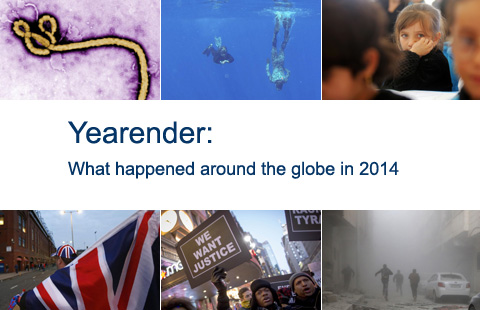Home to roost, cup takes center stage
Updated: 2014-12-29 06:54
By Zhang Kun(Shanghai Star)
|
|||||||||||
The exhibition presents almost 20 procedures showing the creation of the chicken cup featuring "doucai" glaze.
Doucai literally means "colors which fit together", and it was difficult to achieve in the 15th century because blue had to be done under-glaze, while other colors over-glaze, and no satisfactory over-glaze blue enamel was available at the time.
The cup is named after the image of a rooster and hen tending to their chicks, which signifies harmonious country life.
It is said that the emperor Zhu Jianshen, who reigned from 1465-1487, was in love with a woman 18 years older than himself. He had a troubled childhood. His mother died young and his father was taken captive by Mongolians. The woman, surnamed Wan, provided motherly care and when he grew up and became the emperor, she remained the love of his life.
It is said that Madame Wan shared with the emperor a great enthusiasm for ceramics. Academics sometimes argue whether it was Wan or the emperor himself who proposed the design of the "doucai" glaze.
Whatever the case, the royal family and the emperor's aesthetics and interests had a great impact on the trend and development of the craft, says Fang Zhiyuan, a leading researcher of Ming period history.
Thousands of craftsmen were promoted during the Chenghua period. "It was an extremely colorful era," he says. The social values became diversified; a very interesting literati group emerged. It was an important turning point in China's history.
Ming was the last dynasty ruled by the Han ethnic group. In 1644, the Manchurian took over the country and started the Qing Dynasty.
If you go
10 am-6 pm, Tue-Sun, Dec 12-Feb 8, 2015, Long Museum West Bund, 3398 Longteng Avenue, Xuhui district, 龙腾大道3398号021-6422-7636
50 yuan; 80 yuan (combo ticket for the two venues)
Related Stories
36 million chicken cup meets the public 2014-12-19 13:53
Storm over a tea cup 2014-08-05 11:27
Collector pays $ 36 million for tea cup 2014-07-25 09:56
'Chicken cup' sip has netizens on boil 2014-07-21 16:00
Ming Dynasty 'chicken cup' sells for record $36 million 2014-04-09 07:56
Today's Top News
China to add over 13 million jobs in 2014
Beijing eyes 5% drop in PM2.5
Elderly prefer to stay at home
One step closer to creating human egg, sperm
Regulator set to strengthen antitrust laws during 2015
Outbound investment curbs to be relaxed
Festive cheer as Guangdong exports soar
A filmmaker's real-life drama
Hot Topics
Lunar probe , China growth forecasts, Emission rules get tougher, China seen through 'colored lens', International board,
Editor's Picks

|

|

|

|

|

|





